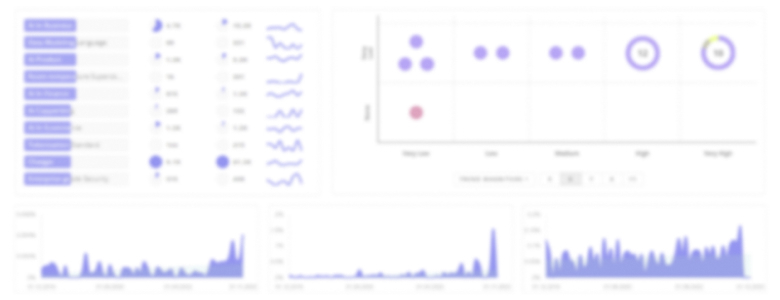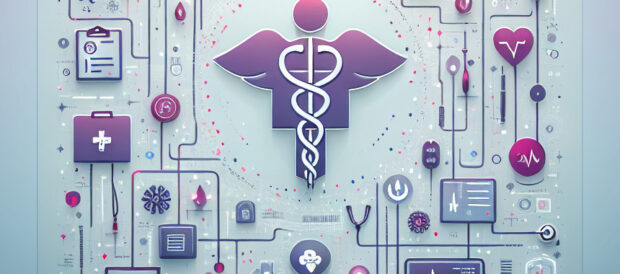
Remote Healthcare Report
: Analysis on the Market, Trends, and TechnologiesThe remote healthcare market is advancing quickly, driven by increased demand for remote patient monitoring, teleconsultations and virtual care solutions. The sector is witnessing substantial growth, with internal data indicating an average annual company growth of 8.73% among 461 companies and remote healthcare funding rounds totaling 504. Increased technology adoption and supportive reimbursement policies, along with the impact of the COVID-19 pandemic, have accelerated the evolution of remote healthcare services from traditional in-person consults to a digitally enabled continuum of care (Grand View Research).
This report was last revised 137 days ago. See a missing piece? Your input can help — contact us.
Topic Dominance Index of Remote Healthcare
The Dominance Index for Remote Healthcare delivers a multidimensional view by integrating data from three key viewpoints: published articles, companies founded, and global search trends
Key Activities and Applications
- Teleconsultations: Delivery of virtual patient consultations using video, audio or chat interfaces to reduce the need for in-person visits.
- Remote Patient Monitoring (RPM): Continuous monitoring of vital signs and other health metrics through wearable sensors and connected devices that enable early intervention.
- Chronic Disease Management: Use of digital platforms to deliver personalised care plans and monitor chronic conditions, thereby reducing hospital readmissions.
- Virtual Care Platforms: Integration of telehealth and RPM into cloud-based systems to offer seamless digital care that facilitates remote clinical decision-making (GlobalData).
- Patient Engagement and Education: Digital tools that equip patients with real-time data about their health and educational resources to promote self-care and adherence to treatment plans.
Emergent Trends and Core Insights
- Rapid Market Expansion: The remote healthcare market is forecast to grow from USD 6.7 billion in 2022 to an estimated USD 33.5 billion by 2032, driven by digital transformation and increasing smartphone penetration (Global Market Insights).
- Increasing Adoption of RPM: With remote patient monitoring accounting for approximately 46.1% of the market share in 2022, RPM is key in personalised and proactive chronic-care management.
- Integration of AI and Wearable Tech: Advancements in AI-powered diagnostics and wearable sensors are enhancing remote monitoring capabilities, leading to improved early disease detection and patient outcomes (FMI).
- Regulatory and Reimbursement Enhancements: Updated reimbursement policies and regulatory relaxations during the COVID-19 pandemic have accelerated telehealth adoption and are expected to continue supporting market growth.
- Geographic Shifts: North America holds over 40.4% of the market share due to advanced infrastructure and high healthcare expenditure, while Asia-Pacific is anticipated to grow at the fastest rate (Precedence Research).
Technologies and Methodologies
- Cloud-Based Platforms: Utilising cloud computing for data storage, telemedicine application delivery and real-time analytics that improve care decisions.
- AI and Machine Learning: Application of AI for patient-data analysis, early diagnostics and personalised treatment planning, driving precision in remote monitoring (HealthSnap).
- Wearable Sensors and IoT Devices: Integration of wearable devices that monitor vital signs and transmit data seamlessly to healthcare providers.
- Real-Time Data Analytics: Implementation of real-time analytics frameworks to analyse patient health data and trigger predictive alerts for timely interventions.
- Secure Communication Networks: Adoption of end-to-end encryption and improved cybersecurity measures to protect sensitive patient data during virtual consultations (Technology Review).
Remote Healthcare Funding
A total of 129 Remote Healthcare companies have received funding.
Overall, Remote Healthcare companies have raised $1.7B.
Companies within the Remote Healthcare domain have secured capital from 504 funding rounds.
The chart shows the funding trendline of Remote Healthcare companies over the last 5 years
Remote Healthcare Companies
hellocare.ai
hellocare.ai offers an end-to-end telehealth platform that seamlessly integrates virtual consultation, remote patient monitoring and AI-driven analytics. Their platform is designed to serve hospitals, home care and ambulatory care settings, ensuring clinicians can deliver connected care across devices. With a focus on improving both operational efficiency and patient outcomes, hellocare.ai is emerging as a key player in the remote healthcare ecosystem.Welcome Home Health
Welcome Home Health provides a virtual care-management solution that acts as an extension of the patient’s clinical care team, particularly focusing on care transitions and adherence post-discharge. They offer tailored patient engagement and direct access to health advocates, which streamlines care coordination and optimises outcomes. This innovative model addresses the challenge of complex care plans in the post-hospital environment.OffSiteCare, Inc.
OffSiteCare, Inc. specialises in transforming rural healthcare by leveraging telemedicine to provide high-acuity services such as ICU solutions and ER consults remotely. Their solutions empower on-site staff with support from expert specialist teams via digital platforms, thus reducing the need for patient transfers and enhancing local care delivery. OffSiteCare’s unique value lies in its cost-effective approach to extend critical care to underserved areas.Health Recovery Solutions
Health Recovery Solutions provides comprehensive remote patient-monitoring and telehealth services with a focus on enhancing clinical decision-making and streamlining reimbursement processes. Their platform offers integrated solutions that combine RPM, EHR integration and patient-engagement tools, making them a preferred partner for healthcare organisations seeking to improve care quality while reducing costs. Operating with a concentrated team, Health Recovery Solutions delivers the new standard in remote care management.
TrendFeedr's Companies feature is your gateway to 461 Remote Healthcare companies.
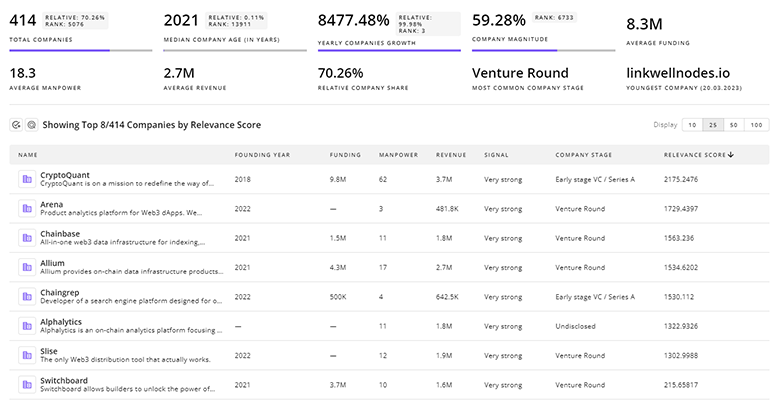
461 Remote Healthcare Companies
Discover Remote Healthcare Companies, their Funding, Manpower, Revenues, Stages, and much more
Remote Healthcare Investors
The Investors tool by TrendFeedr offers a detailed perspective on 483 Remote Healthcare investors and their funding activities. Utilize this tool to dissect investment patterns and gain actionable insights into the financial landscape of Remote Healthcare.
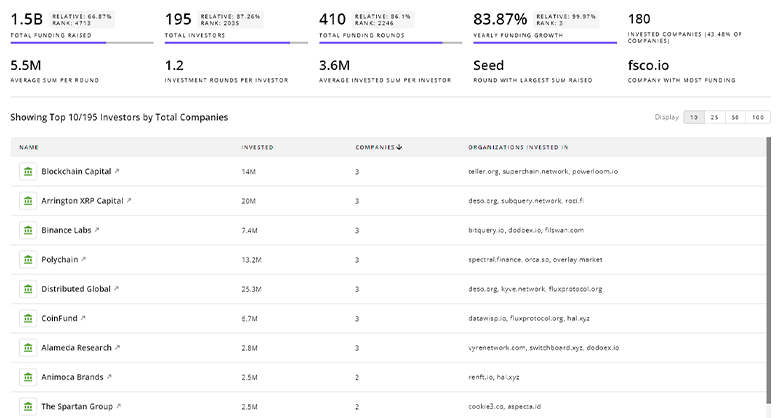
483 Remote Healthcare Investors
Discover Remote Healthcare Investors, Funding Rounds, Invested Amounts, and Funding Growth
Remote Healthcare News
TrendFeedr’s News feature allows you to access 624 Remote Healthcare articles as well as a detailed look at both historical trends and current market dynamics. This tool is essential for professionals seeking to stay ahead in a rapidly changing environment.
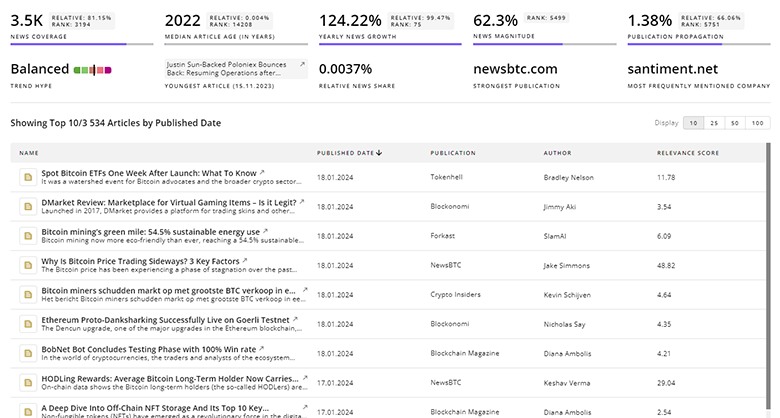
624 Remote Healthcare News Articles
Discover Latest Remote Healthcare Articles, News Magnitude, Publication Propagation, Yearly Growth, and Strongest Publications
Executive Summary
Remote healthcare is emerging as an indispensable component of the modern healthcare ecosystem by offering cost-effective, accessible and patient-centric care solutions. Growth in advanced technologies such as AI, wearable devices and real-time analytics supports the seamless delivery of telehealth services that improve chronic disease management and enhance patient engagement. As regulatory frameworks evolve and digital infrastructure expands, businesses in this space must focus on integrating secure, innovative platforms to meet the growing global demand for remote healthcare.
Partner with us to offer cutting-edge insights into trends and tech. We welcome your input.
